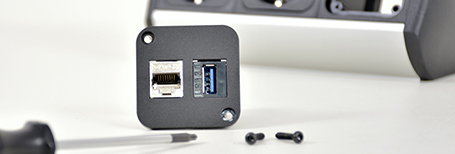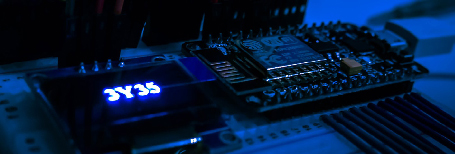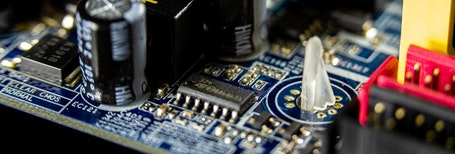
on april 18, 2014, the eu issued the new electromagnetic compatibility directive 2014/30/eu, which will be enforced from april 20, 2016, replacing the old directive 2004/108/ec to adapt to the new legislative framework (nlf) of the eu.
emc (electromagnetic compatibility) is defined by the international electrotechnical commission (iec) as the ability of equipment or system to operate in accordance with the requirements in its electromagnetic environment without generating unbearable electromagnetic interference to any equipment in its environment.
electromagnetic compatibility directive requires that the electromagnetic wave emission generated by all electrical and electronic products and equipment equipped with electrical and electronic components shall not exceed the specified limits, so as not to interfere with the normal operation of other equipment; at the same time, it must have certain anti-interference capability to enable the product to operate normally under normal conditions, namely:
emi (electromagnetic interference) - electromagnetic interference: a signal that has an adverse function during the operation of a device or device. this signal is unwanted and meaningless. it may come from the outside world or itself.
ems (electromagnetic endurance) - electromagnetic endurance: the ability of an equipment or device not to be affected by the surrounding electromagnetic environment during operation.
with the development of electrical and electronic technology, the electromagnetic environment is becoming more and more complex and deteriorating, which makes the electromagnetic compatibility (emc) of electrical and electronic products (electromagnetic interference (emi) and electromagnetic anti-interference (ems) more and more important for governments and manufacturers. today, all electronic and electrical products must be emc certified. after the products meet the requirements of the emc directive, they can be sold in the european market after they are affixed with the ce mark.
1. applicable product scope of emc:
1. domestic radio and television receivers
2. mobile radio equipment
3. medical and scientific equipment
4. household appliances and household electronic equipment
5. educational electronic equipment
6. radio broadcasting and television transmitting equipment
7. industrial manufacturing equipment
8. mobile radio communication and commercial radio equipment
9. information technology equipment
10. aviation and maritime radio equipment
11. communication network equipment and instruments
12. general lamps and fluorescent lamps
2. certification procedures of emc:
1. submit the application form;
2. submit technical date: including product introduction, installation and operation manual, technical drawings, bom list of key parts and components, nameplate design, ce certificate or doc of main purchased parts, etc;
3. sample testing (testing in accordance with relevant coordination standards of emc), emc test items: space radiation, conducted interference, power radiation, magnetic field radiation, harmonic current, voltage fluctuation and flicker, click sound, electrostatic discharge, radiation immunity, electrical fast transient pulse group, surge / lightning stroke, conducted immunity, power frequency magnetic field, voltage drop / interruption, interharmonic immunity, magnetic field exposure test, electromagnetic radiation electromagnetic radiation immunity (anechoic chamber), large current injection, transient conduction emission, transient conduction immunity;
4. after the technical data are complete and the test is passed, the agency will issue the ce certificate and paste the ce mark.
ce certification provides a unified technical specification for products of various countries to trade in the european market and simplifies the trade procedures. any country's products must be ce certified and affixed with ce mark before entering the eu and the european free trade area. therefore, ce certification is the passport for products to enter the markets of eu and european free trade area countries. ce certification means that the products have met the safety requirements specified in the eu directives. it is a commitment of enterprises to consumers, which increases consumers' trust in the products. products with ce marks will reduce the risk of sales in the european market.
q1: which products need emc certification?
the scope of the emc directive applies to almost all electrical appliances and equipment that may cause or receive electromagnetic interference.
q2: how long is the emc certification cycle?
generally, it takes about one month from the project opening to the certificate issuance, and most of the time is to arrange the sample test.
q3: what technical documents are required for emc certification?
(1) electrical schematic diagram (main line, line, diameter, motor power, fuse current or circuit breaker shall be marked)
(2) control plane layout (component drawing)
(3) wiring diagram and terminal inside the electric control cabinet
(4) internal layout of electric cabinet
(5) list of original electrical components (name and model, manufacturer information, whether the quantity used has passed ce certification)
(6) instruction manual (english version)
(7) product difference table
(8) test report
q4: what are the main test items of emc certification?
1. emi (electro magnetic interference) electromagnetic interference test
main contents of emi test:
(1) radiated emission test
(2) conducted interference test
(3) harmonic - harmonic current disturbance test
(4) flicker - voltage change and flicker test
2. ems (electromagnetic immunity) electromagnetic immunity test
main contents of ems test:
(1) esd - electrostatic immunity test
(2) rs - radio frequency electromagnetic field radiation immunity test
(3) cs - conducted disturbance immunity test induced by rf field
(4) dip - voltage sag, short-time interruption and voltage change immunity test
(6) surge - surge (impact) immunity test
(7) eft - electrical fast transient burst immunity test
(8) pfmf - power frequency magnetic field immunity test






tel: 86-400 821 5138
fax: 86-21 3327 5843
email:noa@noagroup.com